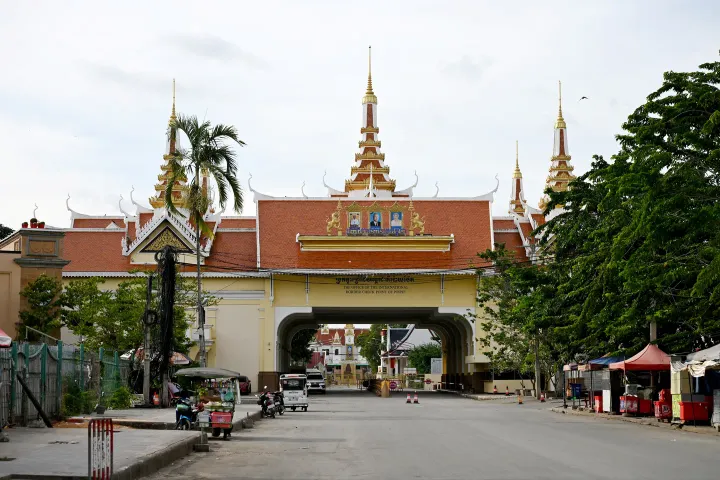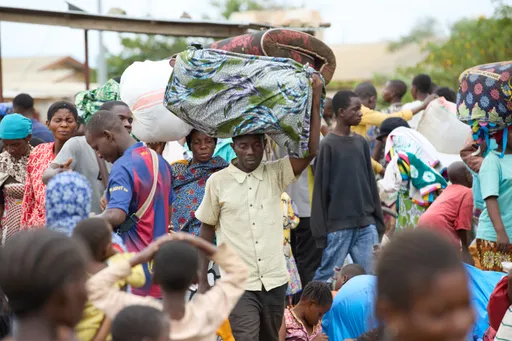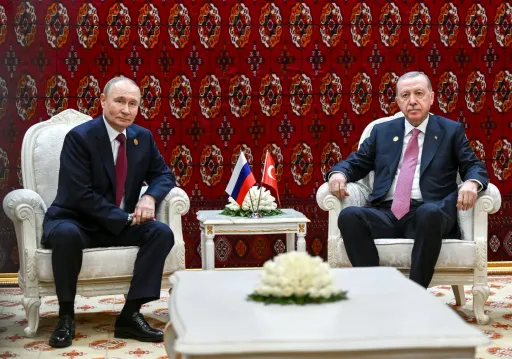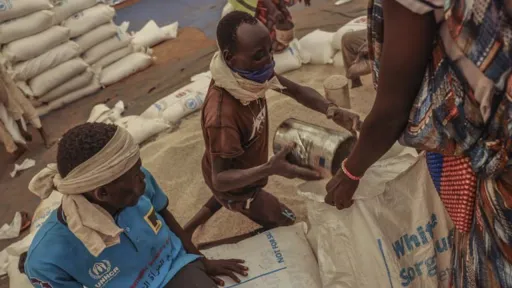By Sylvia Chebet
The moment is etched in Lynette Owande's mind — the familiar ring of her phone, her neighbour's quivering voice, and the mind-numbing news.
It happened one Tuesday afternoon in 2016. Her then three-year-old son, Randall Osteen, had apparently been kidnapped from their house in Rongai, a satellite township on the outskirts of Kenya's capital city, Nairobi.
The suspect was the family's new housekeeper, a young woman who had been with them for barely two days.
"On the third day, around 4 pm, my neighbour suspected something was amiss when my two older boys, who had been playing in her house, weren't called home for lunch," Lynette tells TRT Afrika.
When the concerned neighbour stepped out to check on Randall, she found the gate open, the backdoor ajar, and the little boy's clothes strewn all over. The child, nicknamed Chichi, wasn't there, nor was the housekeeper.
"I was at work when she called. I contacted my husband, and we visited the nearest police station to report our child's disappearance," recalls Lynette.
Extra pairs of eyes
Missing Child Kenya, a free community service founded six years earlier, helped officers from the Directorate of Criminal Investigations (DCI) search for Randall by spreading the word on social media.
"Within hours, we started getting calls and messages from all over. Around 3 pm the following day, we learnt that the girl's hideout had been traced to somewhere in Kiserian (neighbouring Rongai). Much to our relief, my boy was rescued," says Lynette.
The arrested kidnapper and her accomplice spent a year in jail for the offence.
Little Chichi's story might have been different had news of his kidnapping not been amplified, leading to his prompt rescue.
Missing Child Kenya and the DCI have since partnered with Meta to enable "Amber alerts" in Kenya, a technology set to transform search and rescue efforts.
"The chances of finding a missing child increases when more people are on the lookout, especially in the first few hours since such an incident is reported," Maryana Munyendo, co-founder of Missing Child Kenya, tells TRT Afrika.
"The first 48 hours are crucial because they contain a lot of important forensic evidence for a missing child case. For instance, if you are looking for a child wearing a red dress or someone last seen around bus stop X or Y, disseminating that information would make it much easier to trace them."
Twin pillars of rescue
Missing Child Kenya leverages the power of the community as much as it banks on the reach of technology. "They are our eyes and ears on the ground," says Munyendo.
The launch of Amber alerts called "Kenya Emergency Child Alert (KECA)", has been a game changer.
"Law-enforcement agencies activate an Amber alert. In Kenya, our partner is the DCI. If you are in the designated search area, the alert will appear on your Facebook and Instagram feed," explains Munyendo.
"That means if a child goes missing in Nairobi for example, and a user is within a 100-160km radius of the search area, the person will automatically receive an alert about the missing child on Facebook or Instagram."
The alert will include essential details about the child, along with a clear, recent photo accompanied by a short bio, home address, school, and, if available, even a picture of the suspect and the vehicle's number plate.
Other crucial information includes what the missing child was last seen wearing, where they were seen, and any medical conditions or disabilities.
"They say it takes a village to raise a child. It also takes a village to protect that child," says Munyendo. "If we come together and make concerted efforts, we can reduce the time taken to bring lost children back to safety and the love and care of their families."
For grateful parents like Lynette, the initiative is a godsend.
"I had never known so much joy as when my son was found. I knew God would come through for me, but the joy of holding him again is something I can't explain even now. I thank God for the miracle," she tells TRT Afrika.
Battle against trafficking
Kenya is the fourth African country to activate Amber alerts, named after a kidnapped child in the US. Others that have launched the technology include South Africa, Morocco and Nigeria, where over 1.400 children have recently been kidnapped by ransom-seeking gunmen.
Missing Child Kenya records nearly 30 cases every month. Of the 1,551 cases it has handled since inception, the organisation has rescued 1,208 children. Another 315 are still missing, while 28 have died.
Over the years, the organisation has observed a trend. Economic hardships are one of the primary reasons for children disappearing.
"We receive a lot of cases from urban areas with informal settlements because the children there face myriad challenges, including lack of access to education, basic services, and inadequate parental care," says Munyendo.
Such children become vulnerable to predators who lure them with the promise of better lives.
Another factor is cultural practice. Infertility contributes to children going missing because someone will try to steal a child to save their marriage. Therefore, cultic rituals also contribute to the disappearance of children.
It is also common for children to wander and lose their way back home, but child protection experts say these are usually the most straightforward cases to resolve since no perpetrator is involved.
However, children up to five years of age and those with special needs belong to the highest-risk category.
➤Click here to follow our WhatsApp channel for more stories.
























